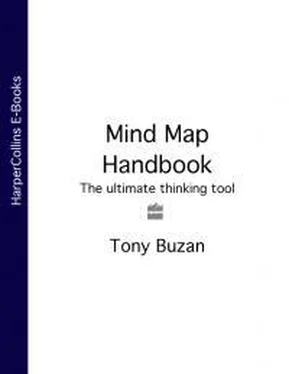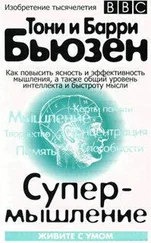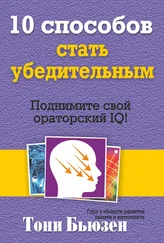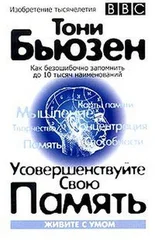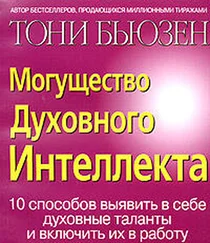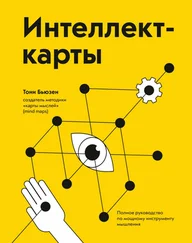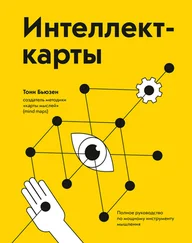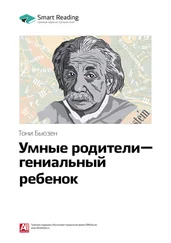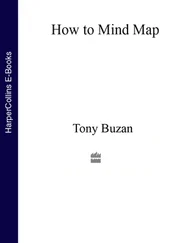3. Mind Map
From now on, Mind Map whenever you have a thinking task. From the previous exercise you will realize that linear note-taking is not only a prison, it is a bit like a series of Samurai sword-cuts that keep slicing your thoughts off at the knees. Mind Maps allow you to explore the infinite associative universes that your brain can create. Use them!
4. The Connection Principle
One of the most important cornerstones in Leonardo da Vinci’s formula for developing a great creative mind was his Principle of Connection. This basically stated that ‘everything connects to everything else’. As Leonardo put it: ‘Everything comes from everything, and everything is made out of everything, and everything returns into everything.’
Do you agree?
If you are one of the very small minority who do not, all you have to do to disprove Leonardo is to find any two things which in some way do not connect.
Leonardo used his Principle of Connection to come up with extraordinary insights into the nature of the world around us. These insights became the foundations for much of modern science.
Here are a couple of Leonardo’s Connections.
First:
‘Observe how the movements of the surface of the water resemble that of hair, which has two movements: one of which stems from the weight of the hair; the other from the waves and the curls. In the same way the water has its turbulent curls, a part of which follows the force of the main current, and another obeys the movement of the incidents of reflection.’
And:
‘The stone where it strikes the surface of the water, causes circles around it which spread out until they are lost; in the same manner the air, struck by a voice or a noise, also has a circular motion.’
Follow Leonardo’s example. Try to find connections between anything and anything .
5. The Non-uses for a Paperclip Game
Give yourself five minutes for this next Creativity Game.
For five minutes, writing as fast as you can, brainstorm all those things for which a paperclip, cannot, in any way, be used. As you do this exercise, I want you to utilize every possible tool you have learnt in the Power of Creative Intelligence. Make sure that you bring everything from your mighty brain to the task, especially what you have learnt about your infinite capacity, and the information on Fluency, Flexibility, Originality and Association.
Whenever you are ready, begin the exercise. When you have completed it, tot up the number of ideas you have had. Circle those ideas which you think are your most creative and then read on.
In traditional Creative Thinking games any number of ideas generated over 10 is considered good. Over 20 is regarded as superb.
In the game you have just completed, however, there is a strange outcome: both a high score and a lower score can be considered excellent!
To generate a lot of ideas is obviously excellent, in that it proves that your Fluency, Flexibility, Originality and Associative brain skills are working well.
However some people find that these very skills cause them an internal debate which actually slows down their productivity. For example, once when I tried this game out, one person thought that a paperclip could not, in any way, be used for drinking liquids. She then argued with herself that you could dip the paperclip into a thick soup, and although the method would be slow, you could still drink using a paperclip.
Now return to your ideas for the non-use of your paperclip, especially the best ones, and start the debate with yourself by again asking the question: ‘Could I, in some way, use a paperclip in this instance?’ Try out your best ideas on your friends.
6. Cause and Effect
Cause and effect, the foundation of modern science, once again depend upon the brain’s astounding capacity to make Associations.
A cause is one thing that connects logically to another thing. You can exercise the power of your Creative Intelligence by creating imaginary and multiple ‘causes’ for ‘effects’. For example, if you see a person who is angry, think, for that particular person in that particular Association, of at least 10 causes why he or she might be angry.
Similarly if you see a flock of birds suddenly sweeping off at a sharp angle in the sky, think of at least five reasons why they might have done so. And so on!
Such an Imagination Game will fill your life with wonderful Creative moments, and will add to your power of imagination, creative writing and creative storytelling. Indeed, some of the best crime and detective writers begin with the premise that if so-and-so occurred, what would happen if it caused such-and-such?
7. Play Association Games
In this particular Association Game, note down a profession and a major item associated with that profession. For example: golf – golf club; writer – pen; fisherman – net; dustman – dustbin; computer programmer – computer; footballer – football; policeman or woman – police car; television presenter – television; butcher – butcher’s knife; etc.
Next scramble the occupations and the objects associated with them, and make imaginative scenarios that creatively expand on these new associations.
This is a marvellous game to play with friends. You will get some surprisingly witty results, and lots of laughs! You can make up an infinite number of games based on the same principle.
8. Use Associations to Improve your Memory
What are the two main cornerstones of your memory? Association and imagination . I have recently been working in this area of the brain and intelligence, and have discovered that Creativity and Memory are not, as is often assumed, opposites. They are identical. In Creativity you make Associations for the purpose of creating new ideas. In Memory you make Associations for the purpose of re- creating ideas!
So from now on, use everything you have learnt in the Power of Creative Intelligence to increase the power of your re-creative Memory! For example, when you park your car, associate it with something in the environment (not the car next to it! The thing you associate it with has to be permanent!) Similarly, when you put down your keys, wallet, passport, briefcase, coat or umbrella, do the same thing: Associate that important object in your life with its environment, and you will remember (re-create) the environment in which you placed it, and where it is in that environment.
People who effortlessly remember names of strangers at parties often use this technique – associating the person and the name with something that they can remember/re-create later.
9. Experiment with Associations in your Daily Life
As you did in the previous chapter’s Creativity Workout, experiment with new combinations in your diet, in your clothing, with your friends, and on your holidays, etc. This time, be especially aware that as you do so you are experimenting with and increasing the power of that marvellous and infinitely capable Association Machine – your Brain.
10. ‘The Universe and Me’ Game
In this exercise you have to put yourself ‘at the centre of the Associative universe’. Each day, pick one random concept or idea, and generate five or more ways/ideas in which this random concept relates to you. Some good ones to get you started include:
Chemistry and me
The sun and me
The moon and me
A video-camera and me
A bird and me
A spaceship and me
Love and me
A paperclip and me!
Planet earth and me
Colour and me
Читать дальше
